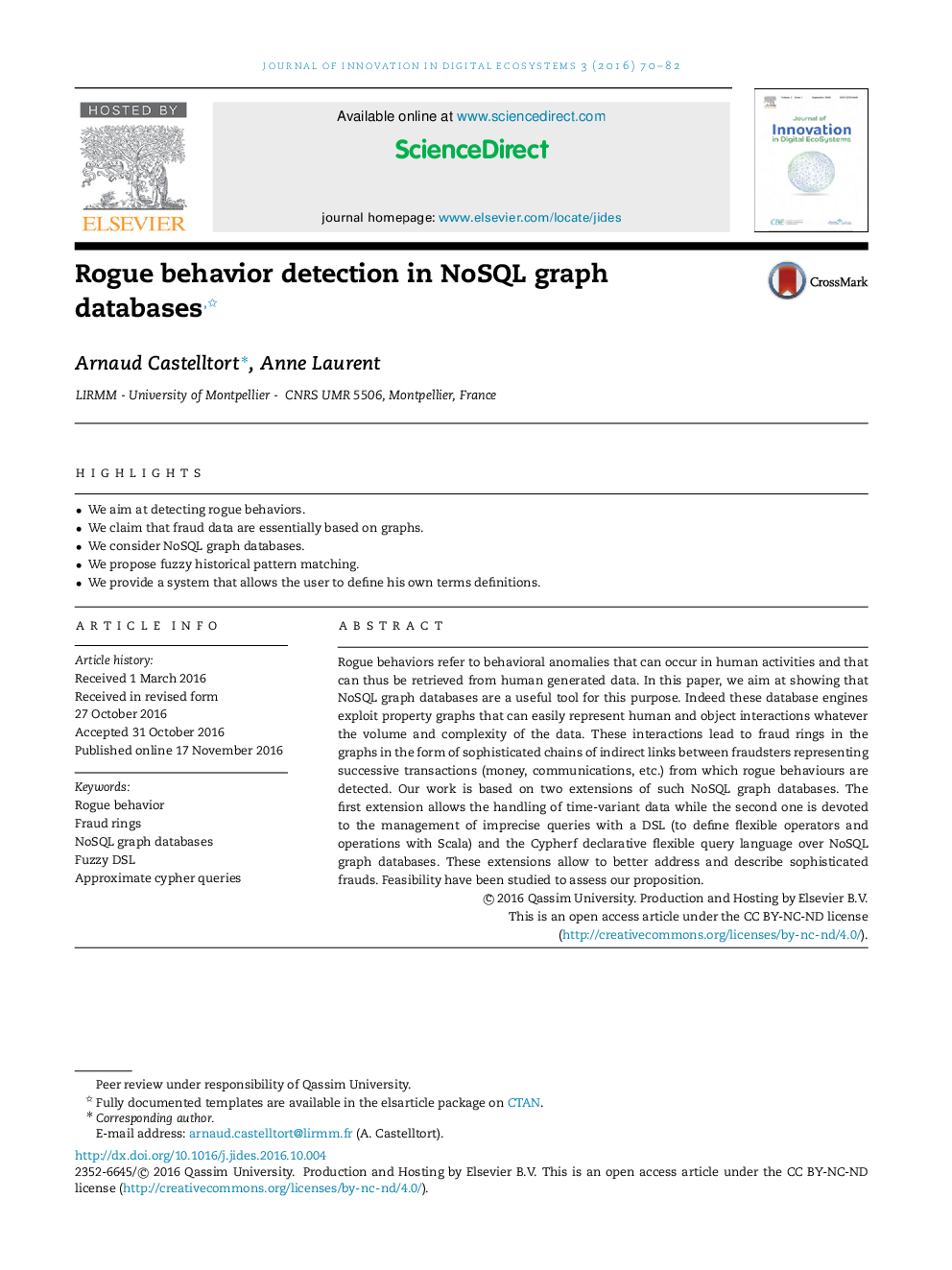| Article ID | Journal | Published Year | Pages | File Type |
|---|---|---|---|---|
| 4951345 | Journal of Innovation in Digital Ecosystems | 2016 | 13 Pages |
â¢We aim at detecting rogue behaviors.â¢We claim that fraud data are essentially based on graphs.â¢We consider NoSQL graph databases.â¢We propose fuzzy historical pattern matching.â¢We provide a system that allows the user to define his own terms definitions.
Rogue behaviors refer to behavioral anomalies that can occur in human activities and that can thus be retrieved from human generated data. In this paper, we aim at showing that NoSQL graph databases are a useful tool for this purpose. Indeed these database engines exploit property graphs that can easily represent human and object interactions whatever the volume and complexity of the data. These interactions lead to fraud rings in the graphs in the form of sophisticated chains of indirect links between fraudsters representing successive transactions (money, communications, etc.) from which rogue behaviours are detected. Our work is based on two extensions of such NoSQL graph databases. The first extension allows the handling of time-variant data while the second one is devoted to the management of imprecise queries with a DSL (to define flexible operators and operations with Scala) and the Cypherf declarative flexible query language over NoSQL graph databases. These extensions allow to better address and describe sophisticated frauds. Feasibility have been studied to assess our proposition.
